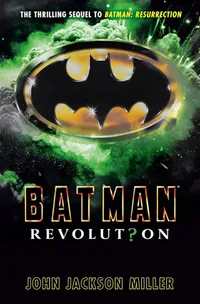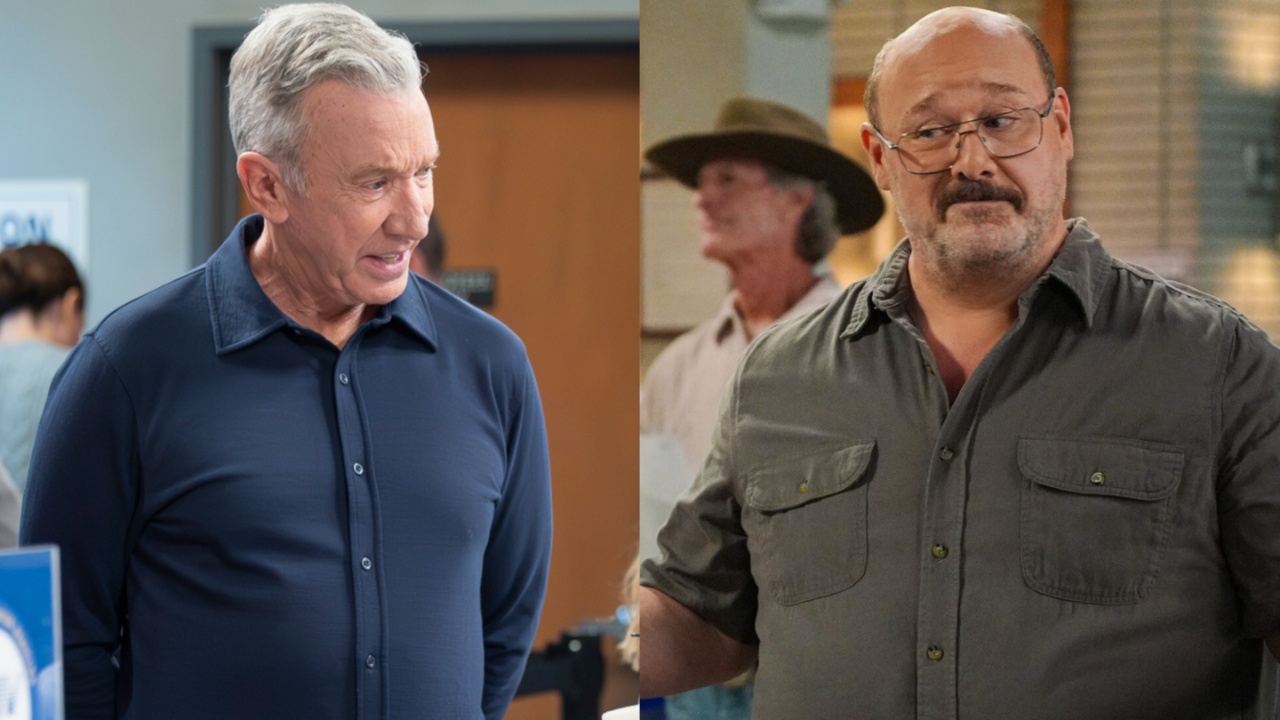Batman: Revolution Introduces A New Riddler, But The Author Told Me Why It Was Also Important To Include Two Deep-Cut Villains
These baddies have the Burton-Verse stamp.
Warning: minor SPOILERS for Batman: Revolution are ahead!
Fans of the Tim Burton-directed Batman movies have had it good the last several years. Not only did Michael Keaton reprise his version of the Caped Crusader in The Flash, there have also been two Batman ’89 comic book series set after Batman Returns that ignore the events of the Joel Schumacher Batman movies. Additionally, last year saw the release of Batman: Resurrection, a novel taking place between Batman and Batman Returns that, among other things, delivered a compelling adaptation of the shapeshifting Clayface.
Now, Resurrection’s sequel has finally arrived, with Batman: Revolution introducing a new Riddler into this Burton-verse… well, a second new Riddler, but more on that later. I spoke to author John Jackson Miller ahead of Revolution’s release, and along with him revealing the origins of this new take on one of Batman’s most recognizable enemies, he also opened up to me why he included two especially deep-cut villains in the novel.
Jump back into the Burton-Verse continuity with Batman: Revolution, the second half of John Jackson Miller's duology that began with Batman: Resurrection.
How Batman: Revolution’s Riddler Came To Be
There’s a new Riddler on the block, and his name is Norman Pinkus. In addition to being a copy boy for the Gotham Gazette and the mastermind behind the newspaper’s Riddle Me This puzzle game, Pinkus also secretly helps the Gotham City Police Department solve crimes by calling in anonymous tips and leaving behind clever clues. In other words, Pinkus is one smart cookie, and John Jackson Miller felt it was important that Revolution’s villain be someone with an intellect that rivaled Bruce Wayne’s, but he didn’t have the same resources and advantages. As he put it:
I wanted to do something where he was a character who would be parallel to Bruce Wayne in terms of relatively the same age, both extremely smart. It's just that one of them has all manner of opportunity, and also the encouragement of Alfred, and before that his parents. Whereas, the Norman character in our book… he's not an unhappy kid. We make that clear in the beginning. He’s a kid in a candy store as far as the world of knowledge. But it's the constraints that are put on him both by how he grew up and also his lack of resources that turn this into something where they're, at opposite sides of the problems of the city. So it goes from there.
Norman Pinkus technically isn’t a brand-new character, because in 1989’s Batman (which I rewatched earlier this year), there’s a scene where Alexander Knox calls out for a copy boy nearby at the Gotham Gazette office, who’s meant to be Pinkus. Batman: Resurrection began fleshing out this character, and Batman: Revolution covers his transformation from meek and mild do-gooder to colorful and flashy antagonist. But just like he did with Clayface in Resurrection, John Jackson Miller wanted tragedy to be infused into Pinkus’ Riddler origin story. In his words:
I think what I also wanted to do was like we did with the first book, with Clayface, I knew that I wanted The Riddler character to be a tragic comic character, that we needed to be with him the whole time, not necessarily agreeing with what he's doing, but we needed to understand how he turns out the way he does.
Batman ’89: Echoes readers will remember that that comic book series features its own Riddler, an Arkham Asylum resident named Edward Nigel Maynard. Without going into specific details, the book does acknowledge Maynard’s existence, allowing for two Riddlers to exist simultaneously. John Jackson Miller informed me that he learned about Maynard in the middle of writing Batman: Revolution and coordinated with Echoes writer Sam Hamm and artist Joe Quinones to make sure everything synced up.
Why The Archer And Killer Moth Were Included
In addition to The Riddler, Batman: Revolution spotlights two other villains who become allies of the Prince of Puzzles. The first is The Archer, who doesn’t originate from the comics, but rather the Batman TV series from the 1960s. This version of the character is reimagined into an unhinged serial killer, and John Jackson Miller told me the following about his take on Archer:
Your Daily Blend of Entertainment News
Well, one of those two, I simply needed a ground level threat that we could imagine would be populating Gotham City. There's gonna be a number of these people that Bruce Wayne as Batman is going to be fighting, and this particular one just really happened to fit, and he turned out to be one of the more deranged characters I've ever written. Definitely not normal. He's twisted like a bag of bread. He's not somebody that is gonna be elected to city council anytime soon.
The second of these supporting villains is Killer Moth, who’s been around since 1951’s Batman #63. Let’s just say this version of the character utilizes special technology that allows him to fly, and John Jackson Miller further explained why he felt Killer Moth and Archer were worthy additions to the novel:
And then the other more high-tech villain was exactly that. I wanted somebody who would be Batman's superior in that sort of thing. Because we do have a number of things that we have to deal with in a book like this. Riddler, we position as kind of the superior mind, but there have to be more than just the henchmen. Otherwise it turns into the 1966 show with everybody wearing uniforms and being pounded. We really had to populate the world around him, with both civilian threats to Batman, and we have a variety of those too, and then also some more superpowered people that we're able to deal with here.
You’ll need to read Batman: Revolution for yourself to learn what happens to the Norman Pinkus Riddler, Archer, Killer Moth and many more characters in the orbit of the Burton-Verse’s Batman. It can purchased now wherever you get your books, physically or digitally. Don’t forget that Tim Burton’s Batman movies can also easily be streamed with an HBO Max subscription.

Connoisseur of Marvel, DC, Star Wars, John Wick, MonsterVerse and Doctor Who lore, Adam is a Senior Content Producer at CinemaBlend. He started working for the site back in late 2014 writing exclusively comic book movie and TV-related articles, and along with branching out into other genres, he also made the jump to editing. Along with his writing and editing duties, as well as interviewing creative talent from time to time, he also oversees the assignment of movie-related features. He graduated from the University of Oregon with a degree in Journalism, and he’s been sourced numerous times on Wikipedia. He's aware he looks like Harry Potter and Clark Kent.
You must confirm your public display name before commenting
Please logout and then login again, you will then be prompted to enter your display name.

